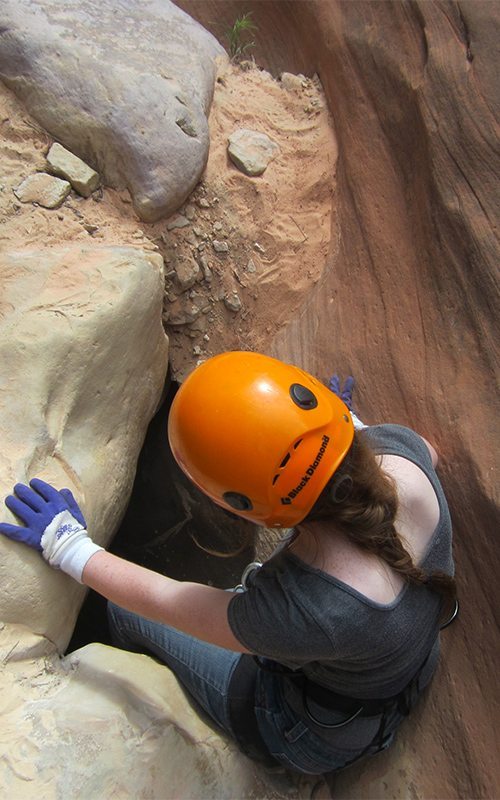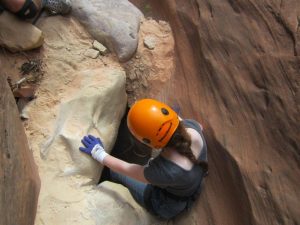I’m a native Utahn, which means I was born with an appreciation for both snow-capped mountains and red rock arches. But while I love both terrains, I favor the desert hills and dunes slightly more.
That’s why Kodachrome Basin is one the best places in the state. It’s an under-appreciated gem that I would never have discovered had it not been for a class trip.
The basin got its name from Kodak’s color film because of its vivid and photogenic nature. It’s about a six-and-a-half hour drive south from Salt Lake City, only 20 miles southeast of Bryce Canyon National Park. At 5,800 feet above sea level, I was surrounded by stunningly barren, sun-soaked canyon walls. It looks like a scene straight out of “Planet of the Apes.” In the heart of red rock country, I drove through the monolithic towers, double arches, hoodoos, and sandstone chimneys.
As I prepared for my trip, I had no intention of letting myself be strapped into a harness and dangled horizontally over a cliff-face, but with my final grade for class on the line, I had no choice: I was going to rappel.
Rappelling is all about the descent. You wear a harness fitted around your waist and upper legs, forming a makeshift woven seat. It’s supposed to be comfortable, but really it’s not.
Luckily, rappelling is a team sport — this calmed my nerves. There is a belayer down at the bottom of the cliff and then, for safety, another person on top to keep an eye on you from above. You say, “On rope!” to let the belayer know you are prepared for your descent; the belayer then replies, “On belay!” to let you know they are ready.
Another important word for rappellers is “rock,” which is used to alert anyone below you that something is plummeting towards them. Whether it’s shale, a rock, a boulder, a sandwich, or your dignity and confidence (as was the case with me), this lets them know to be aware and protect themselves, if need be.
While rappelling may look fun, it’s also pretty scary. Imagine it: You’re at a 90–degree angle to a cliff face with no faith whatsoever in your lower body strength and a terrifying number of total strangers responsible for your safety. I felt a fear that can only be described as a “127 Hours” degree of hopelessness.
The only thing not trembling was my right hand on the rope behind me. My legs had completely forgotten how to function, and I relied on muscle memory as I tentatively took my first few steps down the cliff face. I had to tell myself that it was just a few feet. Just a few vertical feet. That you have to walk down. While suspended. In the air. And backwards.
This was something I’d never done before, something I’d never thought of doing before, and something I never thought myself capable of doing.
For the rappelling experts reading this, I’m sorry. I’m sure you know that 75 feet really isn’t that far and, realistically, each individual rappel only takes about one to two minutes. That is, unless you’re me and you need 10 minutes, which actually feels like 10,000 years, and you can’t remember a time in your life when you weren’t hanging upside down having someone yelling at you from both above and below.
For those of you who haven’t rappelled, I have one piece of advice: Do it. Bring all the right equipment, choose your partners wisely, and for the love of God, don’t go any time between July and August because you may actually melt. But do it because there is no reason why rappelling won’t be the best experience of your life. Despite my fear, it certainly was for me.
@KamrynLinda



